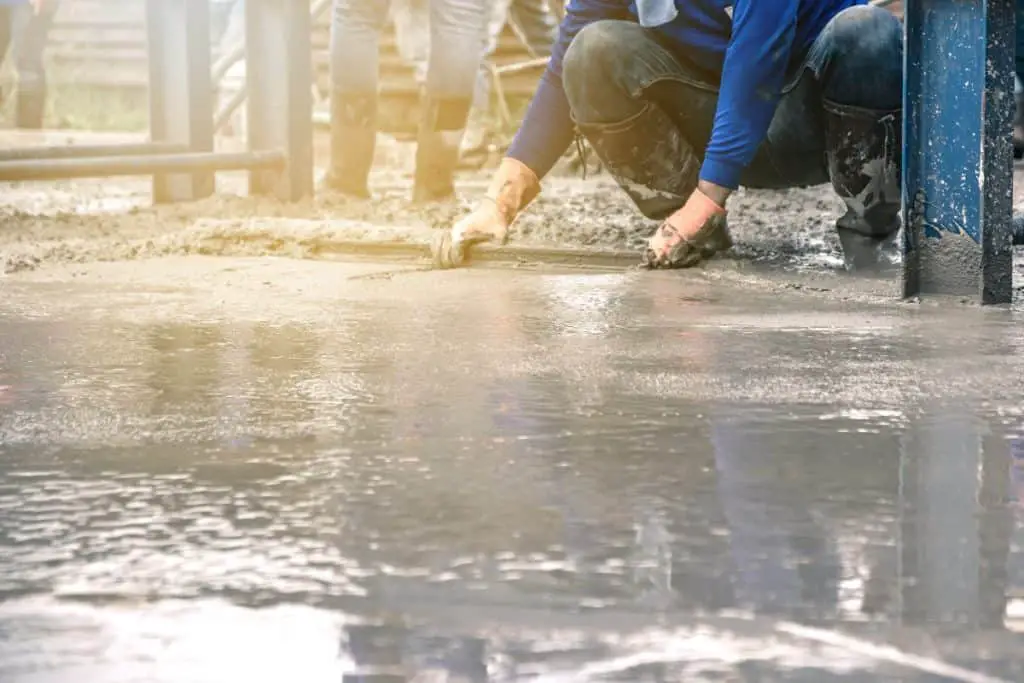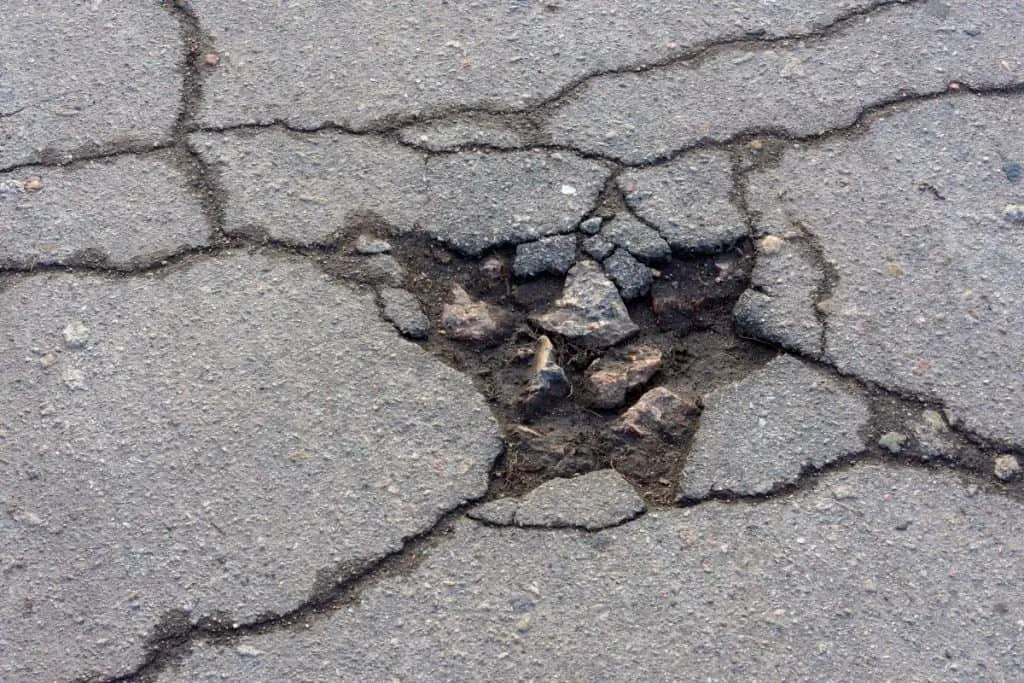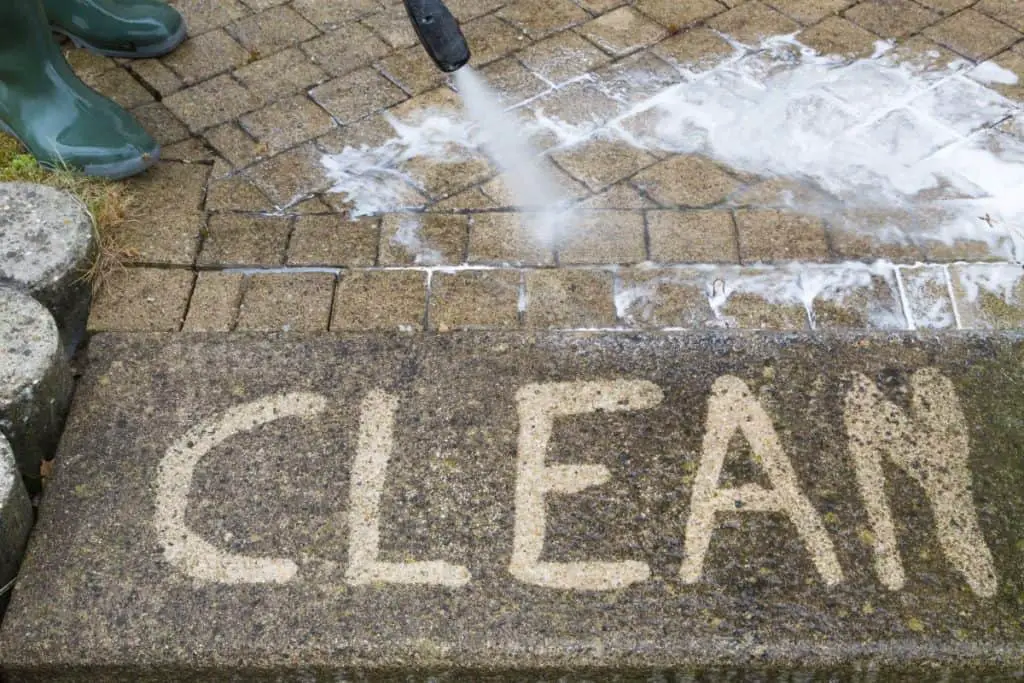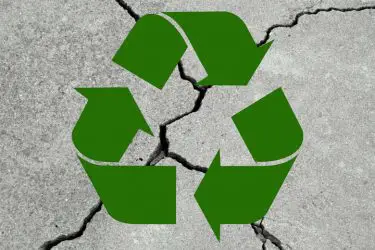The setting process for concrete is extremely important, and anything that tampers with it can cause turmoil for a new project. Weather conditions such as heavy rainfall can be especially dangerous during the concrete pouring process.
Concrete work should not be done in the rain. It should be postponed if there’s a prediction for heavy rainfall that day. If it’s raining hard and the concrete gets too wet, your pour could experience serious damage. If it does start raining during a concrete pour, you should stop work immediately.
I’m from Washington State, so whenever I work on a new project outside I need to know how rain might affect it. This is especially important when it comes to concrete. Concrete can be expensive to replace and difficult to repair. That’s why it’s imperative to know what to do if it starts to rain during the course of a project.

Table of Contents
What to Do if It Begins to Rain During Concrete Work
The first thing you should do is remember not to panic! If it’s only raining a little bit, your concrete should be totally fine. A light drizzle or a fine mist will probably be harmless to whatever project you’re doing as long as it doesn’t develop into more heavy rainfall.
If heavy rain does occur during a project you should:
1. Stop pouring right away
This will limit the damage that the water will do to just one layer, and as long as this layer isn’t too badly damaged you should be able to complete the pour once the rain has stopped with no consequences.
2. Cover up what you already have down with a tarp
This will keep the water off of it. Make sure to seal the tarp to the corners of the form so that no water gets into the block. Be sure to do this as quickly as possible! The faster you can cover your concrete the more damage you’ll be able to prevent.
3. Wait for the rain to stop
Covering your concrete with a tarp or plastic will give it the time that it needs to set properly. Concrete needs water in order for it to set, but in order for it to set correctly, it’s best to use as little water as possible.
Having too much water in the mixture while the slab is still setting can badly weaken the structure, leaving you with a brittle and easily destroyed final project.
This is probably not what you want, so make sure to cover your concrete as quickly and efficiently as possible. However, if you have covered your concrete well, it will probably be safe under its covering until it starts raining.
3. Set your concrete free
After the rain has ended, you can safely uncover your concrete. Once the concrete has had time to set, it will most likely be safe for it to get wet.
Read more: How Long After Pouring Is Concrete Safe From the Rain?
In fact, while concrete may be set enough to leave out in the rain after only around three hours, it can continue setting for months and even years.
During this time allowing it to get a little wet occasionally can actually be good for it, although excessive rainfall and cold temperatures can still do damage to it over time.
If you’re worried about that risk, it may be a good idea to apply a sealant to your concrete once it’s set.
Also Read: Do Concrete Workers Work in the Rain?
What Structures Are At The Greatest Risk?
Concrete slabs (like those used for driveways or flooring) are the most vulnerable to rain as they can be difficult to cover completely with tarp or plastic. It is also easy for water to pool in these areas. Foundation walls, however, can be covered quite easily.
If you do have to pour when it looks like it may rain, it’s a good idea to get the parts done that are easiest to cover first, as these things will be easiest to protect if it does happen to rain.
How To Spot Rain Damage in Concrete?
Once it’s stopped raining and you can uncover your concrete, you should let it dry for a while and then check for damage.
Dusting
Dusting occurs when a weak surface layer mixes with water and then dries quickly. If the surface is damaged seriously enough, it may become uneven and need to be resurfaced.
You’ll be able to tell whether or not you have dusting on the top of your concrete because it will appear light and powdery and may even be brittle.
When checking the sides, look for that same powdery texture. If damaged, the sides may also have taken on a particularly rough edge.

Ponding
Ponding is where small indentations in your concrete caused by rain or some other erosion collect water to form puddles. This can lead to further erosion, which can end up creating potholes and other hazards.
If you do discover ponding on your concrete, you will probably have to sand and then resurface it to solve the problem. Information about sanding and resurfacing can be found in the next section.
How To Fix Damaged Concrete?
You can use a concrete saw to cut off edges that have been damaged to the point of unusability, although this will only be necessary if the sides have taken serious damage.
The top, meanwhile, can be sanded down using a diamond concrete grinding machine or an industrial sander with a diamond head.
Fortunately, the damage on the top of the concrete rarely goes deeper than a quarter of an inch. Once you’ve sanded past the dusty brittle part of the slab you should be good to stop.

When you have finished this, you may want to resurface your slab to make sure it’s even and fits in with slabs around it.
Before you do this, you’ll want to be sure to clean the surface completely with a strong pressure washer and fill in any cracks that might be present on the old surface.
Here’s a tutorial you can check out for more instructions about resurfacing concrete.
At this point, you may have removed some sections from the sides of your slab. For many projects, this will be fine. However, if your project is intended for use as a walkway you may want to patch these holes along with any other cracks that the rain may have caused.




